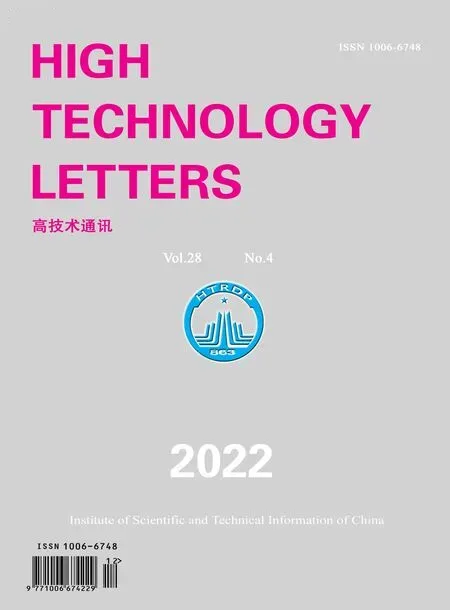Research on buffer structure and flow field simulation of swash plate plunger type hydraulic transformer①
2022-02-11WANGXiaojing王晓晶HUOShuhangLIWenjie
WANG Xiaojing(王晓晶),HUO Shuhang,LI Wenjie
(*Beijing Key Laboratory of Performance Guarantee on Urban Rail Transit Vehicle,Beijing University of Civil Engineering and Architecture,Beijing 102616,P.R.China)
(**Beijing Engineering Research Center of Monitoring for Construction Safety,Beijing University of Civil Engineering and Architecture,Beijing 102616,P.R.China)
(***School of Mechanical and Power Engineering,Harbin University of Science and Technology,Harbin 150080,P.R.China)
Abstract
Key words:hydraulic transformer,pressure shock,buffer structure,flow field simulation,dynamic grid
0 Introduction
The secondary regulation system of the constant pressure network improves the system efficiency of hydraulic transmission.As the key component of the system,the hydraulic transformer can realize the non-destructive transmission of hydraulic energy with low cost,stable operation,and good control performance.However,due to the plunger structure of the hydraulic transformer,pressure pulsation and shock inside the plunger chamber are the main causes of noise and vibration of the system[1-3].Reducing pressure shock and flow fluctuation by optimizing the plunger distribution mechanism is one of the main methods to reduce noise and improve operation stability,and it is also a hot research topic in the field of hydraulic system[4-5].
Over the years,domestic and foreign scholars have done a lot of research to improve the buffer performance of the distribution mechanism and promoted the further development and improvement of the new hydraulic transformer.The research on the buffer structure is mainly focused on the damping hole,triangular groove and composite structure form.
Xu et al.[6]established a dynamic model of pulsation output by studying the fault supporting role and pressure relief groove of the flow valve mechanism,and proposed a simulation model optimization method to reduce the instantaneous flow.In order to improve the flow pulsation rate in the outlet,Hong et al.[7]proposed a method based on numerical analysis to optimize the depth and width of the U-shaped buffer groove on the valve plate.Shentu et al.[8]found that the port area was the main factor affecting the pressure impact characteristics when studying the axial plunger structural elements,and pointed out that the outlet pulsation rate could be reduced by improving the cross-sectional area of the valve plate.Yang and Jiang[9]developed a variable hydraulic transformer and proposed a compound buffer structure optimization scheme with self-adaptability of oil volume in the plunger chamber to suppress the port noise.Wang et al.[10]used the computational fluid dynamics method to conduct dynamic simulation of the oil suction and discharge process of the piston pump,so as to establish a parameterized model for the valve plate structure and realize the optimization of triangular groove parameters.
In recent years,the research on the buffer structure of the new hydraulic transformer is mainly focused on the buffer groove structure,but there is little research on the influence of the buffer hole structure on noise and vibration.In this paper,the buffer hole structure is established on the valve plate to alleviate the pressure impact of the inclined plate plunger hydraulic transformer and further improve the stability of the inclined plate plunger hydraulic transformer.
1 Plunger cavity oil pressure gradient and its increment equation
During the operation of the inclined plate plunger hydraulic transformer,the oil volume in the plunger cavity changes.As shown in Fig.1,a plunger is randomly selected as the research object,and the oil pressure gradient in the plunger cavity is deduced by the control volume method.It can be obtained according to the law of conservation of mass.
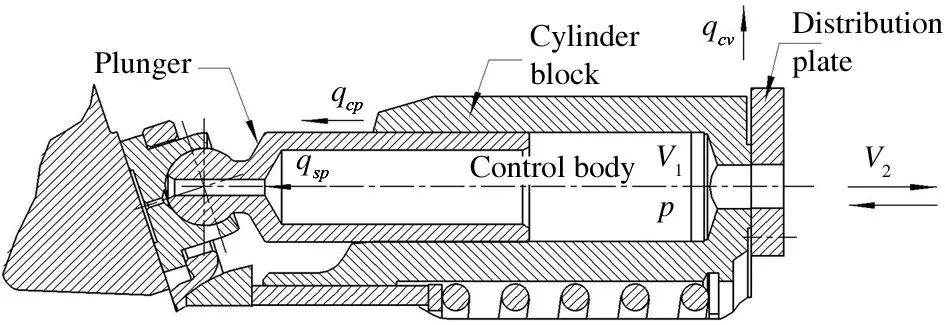
Fig.1 The structure of plunger

where,qcvis the oil leakage flow at the distribution pair(m3/s),qcpis the oil leakage flow at the plunger pair(m3/s),qspis the oil leakage flow at the slipper pair(m3/s),V1is the volume change caused by the movement of the plunger itself(m3),V2is the volume change caused by the plunger suction or discharge of oil from the distribution groove(m3).ρis the oil density(kg/m3),and the oil density of No.32 anti-wear hydraulic oil is 870 kg/m3.
Due to the high volumetric efficiency and low leakage of the plunger element,after ignoring the leakageqcv,qcp,andqsp,only the influence of the plunger movement and the connection between the plunger and the buffer structure is considered,and the oil pressure gradient in the plunger cavity with respect to angleφ(°)can be obtained by

where,pis the pressure of oil in the plunger cavity(Pa);βeis the elastic modulus of oil(Pa),andβe=7×108Pa;Vminis the minimum volume of oil in the plunger chamber(m3),Vmin=6.22×10-6m3;SAis the plunger area(m2),SA=2.27×10-4m2;Ris the radius of the plunger distribution circle(m),R=0.0335 m;βis the swash plate angle(°),β=18°.φ0is the angle from the bottom dead point of the plunger to the initial position of pre-lift/step-down(°);Cqis the flow coefficient of the buffer structure,Cq=0.72;Δpis the oil pressure difference between two adjacent grooves(Pa);nis the speed of swashplate plunger type hydraulic transformer(r/min),n=1000 r/min;S0is the minimum cross-sectional area of the buffer structure(m2).
The increment equation is derived from the pressure gradient of oil in the plunger cavity.

Further,

where,Δp1is the change of oil pressure in the plunger cavity caused by the plunger movement(Pa),Δp2is the change of oil pressure in the plunger cavity caused by the buffer structure(Pa).
2 Optimal design of valve plate buffer structure
Envelope angleΔφof buffer structure of different sizes is taken and substituted into Eq.(3)whenφ0is in the interval of[0 °,120 °],and the change curves of oil pressure in the plunger cavity caused by the plunger movement are obtained,as shown in Fig.2.
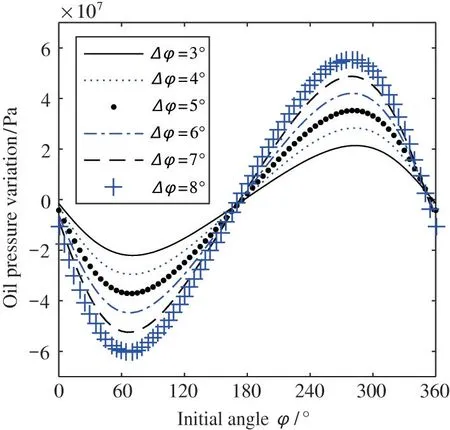
Fig.2 Pressure curves caused by plunger motion
In the interval of[0°,120°],|Δp1|is less than the rated pressure of swashplate plunger type hydraulic transformer 40 MPa,so the buffer structure envelopment angleΔφis 5°.And the product of the maximum pressure variation ratio of the swashplate plunger type hydraulic transformer and the oil source pressure should not be greater than the rated pressure of 40 MPa.At present,the maximum voltage change ratio of the swash plate plunger hydraulic transformer is 1.2-4.8.For the insurance purpose,the maximum pressure change ratio is 4∶1,and the pressure of the low-pressure groove is 0 MPa,then the pressure of the oil source is 8 MPa.
The triangular groove represents the position of the buffer structure,as shown in Fig.3.In Fig.3,δis the pressure adjustment angle of the hydraulic transformer,which is defined as the angle between the center point of thexoyplane of the valve plate and the equal point of the grooveAand the negative half-axis direction of theyaxis.
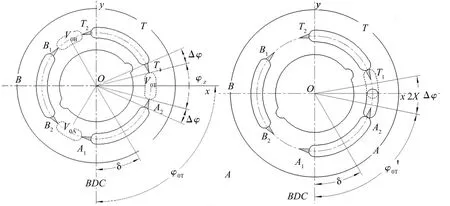
Fig.3 Pressure curves caused by plunger motion
When the hydraulic transformer is in a balanced state,its speed is constant.From the law of conservation of energy,the power balance equation of hydraulic transformer can be obtained as follows.

In Eq.(5),pA,pB,andpTare the pressure of the groovesA,B,Trespectively(Pa);qA,qB,andqTare the flow rate of the distribution grooveA,B,T,respectively(m3/s);Wlossis the power loss caused by viscous friction torque,sliding friction torque and leakage(kW)
In general,takeWlossas 0 kW,and the formula of variable pressure ratio about variable pressure angle can be obtained from Ref.[11].

In Eq.(6)Πis the ratio of output and input pressure.
TakepTas 0 MPa,and the following relation can be obtained.

V0T,V0B,andV0Aare the oil volume in the plunger cavity respectively when the plunger is just in the middle position of grooveA-T,grooveT-B,and grooveBA.The magnitude of its angle relative to the lower dead point BDC is denoted asA,BandCrespectively.At the same time,when the plunger is just out of the grooveA,T,andB,the position of the plunger angle isφ0T',φ0B',andφ0A'.The relationship is as follows.

When the size of theΔp2is the same value,the pressure change caused by the buffer hole is more stable and uniform than the triangular groove,and the influence ofΔp1can be better balanced in the global state.Therefore,the stage of changing the cross-sectional area of the overcurrent with shorter buffer hole is ignored,and the buffer hole structure is used for design and analysis.

where,dis the diameter of the buffer hole(m).
When the plunger runs between the distribution windows,the pressure changeΔp2can be divided intoΔp21andΔp22when it passes through two buffer structures,and thenΔp2=Δp21+Δp22.
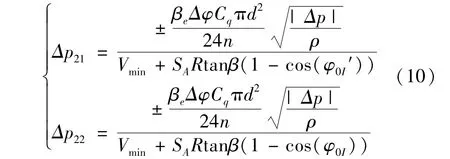
The plus or minus sign ofΔp2depends on the over-step-down or over-boost caused byΔp1.In order to alleviate the pressure impact inside the hydraulic transformer,Δp1andΔp2need to cooperate withBto complete the pre-step-up/step-down process ahead of time.
In summary,when the oil source pressure is 8 MPa,the pressure of the low-pressure grooveTis 0 MPa,the envelope angle of the buffer holeΔφis 5 °,and the variable pressure angle is 101°,the maximum variable pressure ratio is 3∶1,the optimal design of the buffer hole structure can be carried out under the above conditions.
2.1 Design of buffer structure in the pressure variation range of groove A-T
For the pre-depressurization range from grooveAto grooveT,there isΔp1<0 andΔp2>0.In order to enableΔp2to cooperate withΔp1to complete the predepressurization process ahead of time,Eq.(11)should be satisfied.

Further,
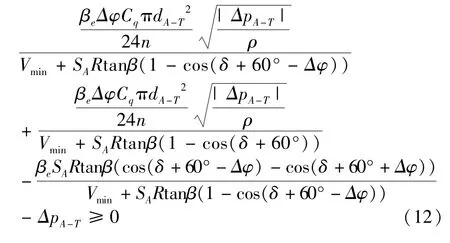
When the diameter of buffer hole is 1.5 mm,1.6 mm,1.7 mm,1.8 mm,1.9 mm and 2.0 mm,the buffering effect curves are shown in Fig.4.
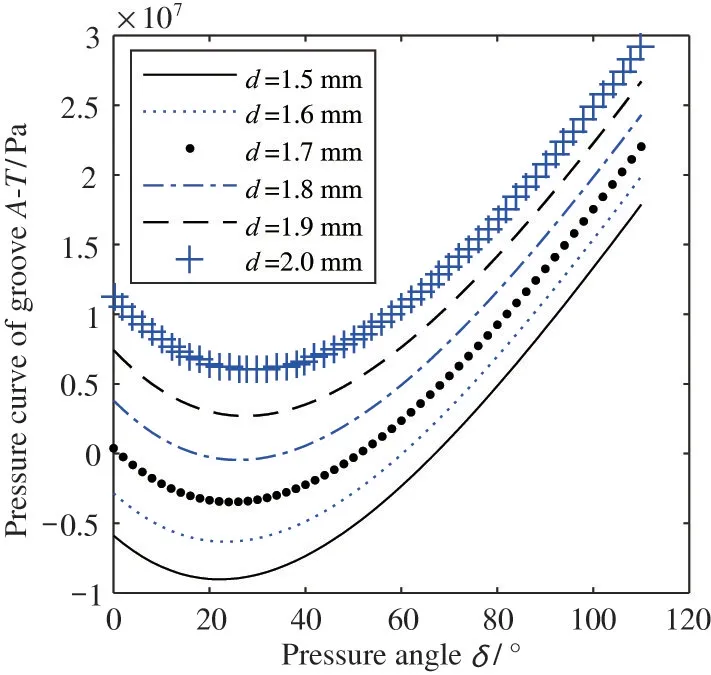
Fig.4 Comparison of buffering effect curves of different buffer holes in groove A-T
As can be seen from Fig.4,when the diameter of the buffer hole is 1.8 mm,Eq.(12)can be satisfied.Because the excessive diameter of the buffer hole will affect the error,which is ignored when the buffer hole is regarded as a constant cross-sectional area buffer structure.The buffer holeA2andT1in the pre-pressure range from grooveAtoTshould be as small as possible.Thus,the diameter should be taken as 1.8 mm.
2.2 Design of buffer structure in the pressure variation range of groove T-B
For the pre-depressurization range from grooveAto grooveT,there isΔp1>0 andΔp2<0.In order to enableΔp2to cooperate withΔp1to complete the preboost process ahead of time,Eq.(13)should be satisfied.
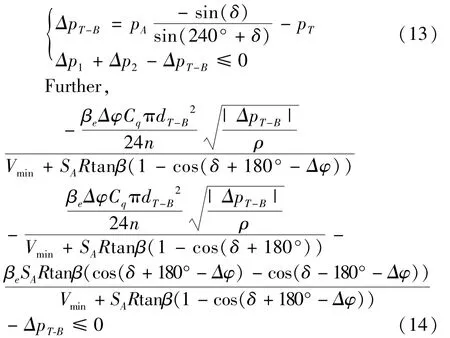
When the diameter of buffer hole is 1.5 mm,1.6 mm,1.7 mm,1.8 mm,1.9 mm and 2.0 mm,the buffering effect curves are shown in Fig.5.
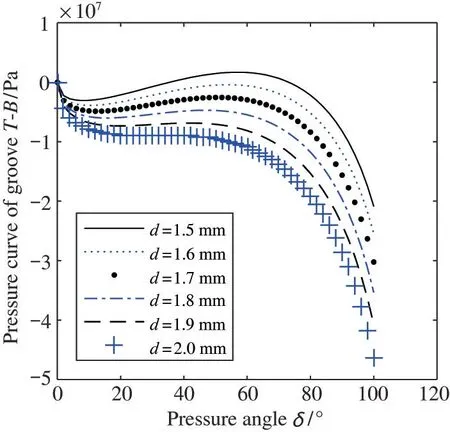
Fig.5 Comparison of buffering effect curves of different buffer holes in groove T-B
As can be seen from the figure,when the diameter of the buffer hole is 1.6 mm,the Eq.(14)can be satisfied.For the reasons in subsection 3.1,the diameter of the buffer holeT2andB1in the pre-boosting area from the grooveTtoBis 1.6 mm.
2.3 Design of buffer structure in the pressure variation range of groove B-A
In the range of variable pressure angle[0 °,60 °],there is a pre-boost range from grooveBtoA,Δp1>0 andΔp2<0.In order to enableΔp2to cooperate withΔp1to complete the pre-boosting process ahead of time,Eq.(15)should be satisfied.

When the diameter of buffer hole is 1.5 mm,1.6 mm,1.7 mm,1.8 mm,1.9 mm and 2.0 mm,the buffering effect curves are shown in Fig.6.
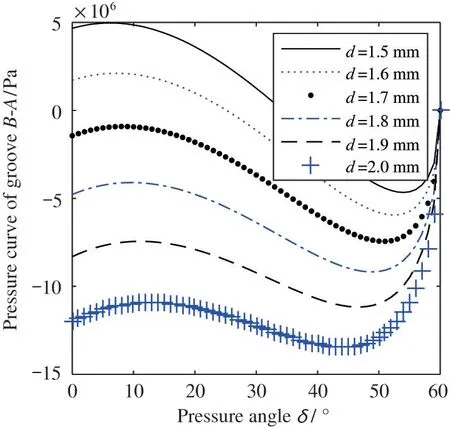
Fig.6 Comparison of buffering effect curves of different buffer holes in groove B-A[0°,60°]
As can be seen from the figure,when the diameter of the buffer hole is 1.7 mm,Eq.(16)can be satisfied.For the reasons in subsection 2.1,the diameter of buffer holesB2andA1is 1.7 mm in the pressure variation angle range[0°,60°],when the grooveBtoAis the pre-step-down interval.
In the variable pressure range[60°,101°],there is a pre-depressurization zone from grooveBtoA,Δp1<0,Δp2>0.In order to enableΔp2to cooperate withΔp1to complete the pre-depressurization process ahead of time,the following relationship is established.

When the diameter of buffer hole is 1.0 mm,1.1 mm,1.2 mm,1.3 mm,1.4 mm and 1.5 mm,the curves are shown in Fig.7.
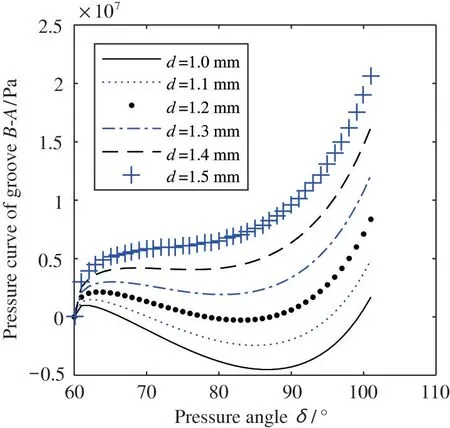
Fig.7 Comparison of buffering effect curves of different buffer holes in groove B-A[60 °,101 °]
As can be seen from Fig.7,when the diameter of the buffer hole is 1.2 mm,Eq.(18)can be satisfied.For the reasons in subsection 2.2,the diameter of buffer holesB2andA1is 1.2 mm in the pressure variation angle range[60°,101°],when the grooveBtoAis the pre-step-down interval.
Considering the overall situation,in order to complete the pre-step-up/step-down process ahead of time,the diameters of buffer holesB2andA1should be 1.7 mm in the range of variable pressure angle[0°,101°].
3 Simulation analysis of flow field
In order to avoid the closed dead volume of the hydraulic transformer in the working process,the angle of temporarily connecting the two distribution grooves through the buffer structure is 1 °,that is,the angle between the actual grooves is 9 °.On this basis,the simulation study of inclined plate plunger hydraulic transformer is carried out when the variable voltage angle is 30 °,60 °,90 ° and 101 ° respectively.When the variable pressure angle is 30°,the grooveB-Ais in the pre-boost range,and the transformer ratio is 2∶1,the input pressurepAis 8 MPa,and the output pressurepBis 4 MPa,and the pressure cloud diagram is shown in Fig.8.

Fig.8 Piston pressure cloud diagram whenδ=30 °
When the pressure change angle is 30 °,the average mass pressure curve of the oil in the plunger cavity in the pre-boost interval of grooveB-Ais shown in Fig.9.
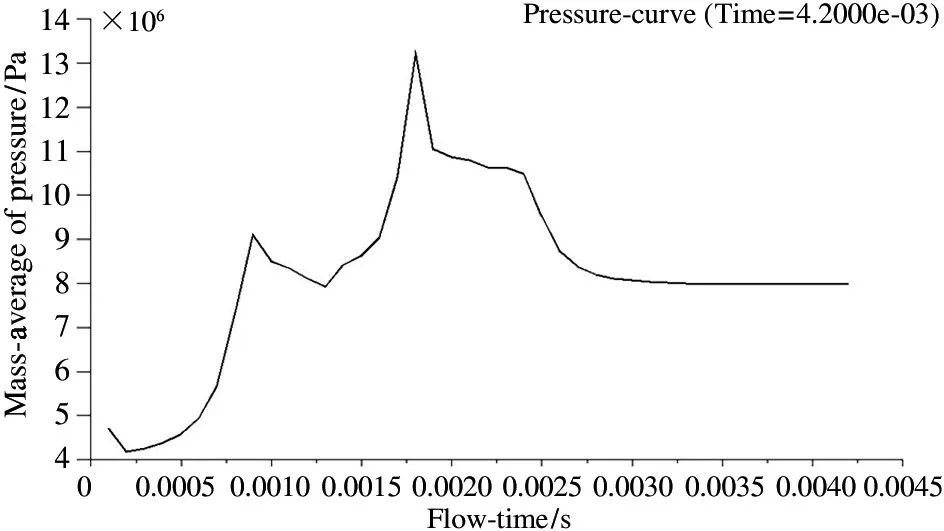
Fig.9 Mass-average pressure curve of oil in piston cavity whenδ=30 °
As can be seen from Fig.9,whent<0.0001 s,the oil pressure in the plunger cavity is already increasing when it leaves grooveB.Whent=0.0017 s,the plunger is about to leave the buffer holeB2and contact the buffer holeA1,and the oil pressure in the plunger cavity rises steeper,and then the pressure drops under the influence of buffer holeA1and remains within a certain range.Whent>0.0024 s,the plunger contacts grooveA,and the oil pressure in the plunger cavity quickly matches to the pressure value of grooveA.
When the pressure change angle is 60°,the pressure of grooveBis the same as that of grooveA.At this time,the pressure change ratio is 1∶1,the input pressurepAis 8 MPa,and the output pressurepBis 8 MPa,and the pressure cloud diagram is shown in Fig.10.

Fig.10 Piston pressure cloud diagram whenδ=60 °
When the pressure variation angle is 60°,the average mass pressure curve of the oil in the plunger cavity in theB-Apressure variation interval of the groove is shown in Fig.11.
As can be seen from Fig.11,at this time,the average mass pressure of oil in the plunger cavity continues to be within the range of 7.9 MPa-8.25 MPa,which can be regarded as the expected buffering effect of buffering holeB2and buffering holeA1.
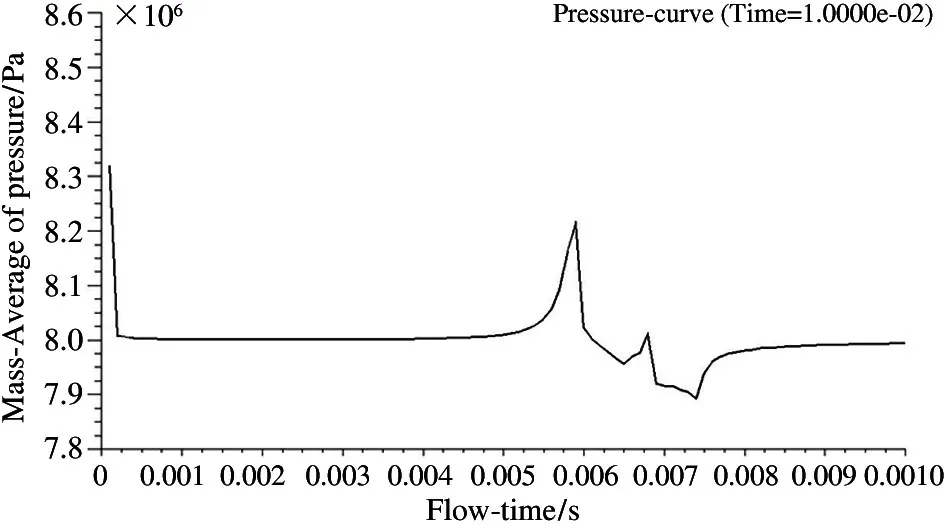
Fig.11 Mass-average pressure curve of oil in piston cavity whenδ=60 °
When the pressure change angle is 90 °,grooveB-Ais the pre-step-down interval,and the pressure change ratio is 1∶2,the input pressurepAis 8 MPa,and the output pressurepBis 16 MPa,and the pressure cloud diagram is shown in Fig.12.

Fig.12 Piston pressure cloud diagram whenδ=90 °
When the pressure variation angle is 90°,the average mass pressure curve of oil in the plunger cavity in the pre-depressor interval of grooveB-Ais shown in Fig.13.
As can be seen from Fig.13,whent<0.0043 s,the oil pressure in the plunger cavity is already depressurizing when it leaves grooveB.Whent=0.005 s,the plunger is about to break away from the buffer holeB2and contact the buffer holeA1,and the oil pressure in the plunger cavity drops sharply,and then remains within a certain range under the action of the buffer holeA1.The fluctuation in the Fig.13 is due to the fact there is a certain low-pressure area in part of the interval at this stage,which affects the value of the average mass pressure of the oil in the plunger cavity.Whent>0.0057 s,the plunger contacts grooveA,and the oil pressure in the plunger cavity quickly matches to the pressure value of grooveA.
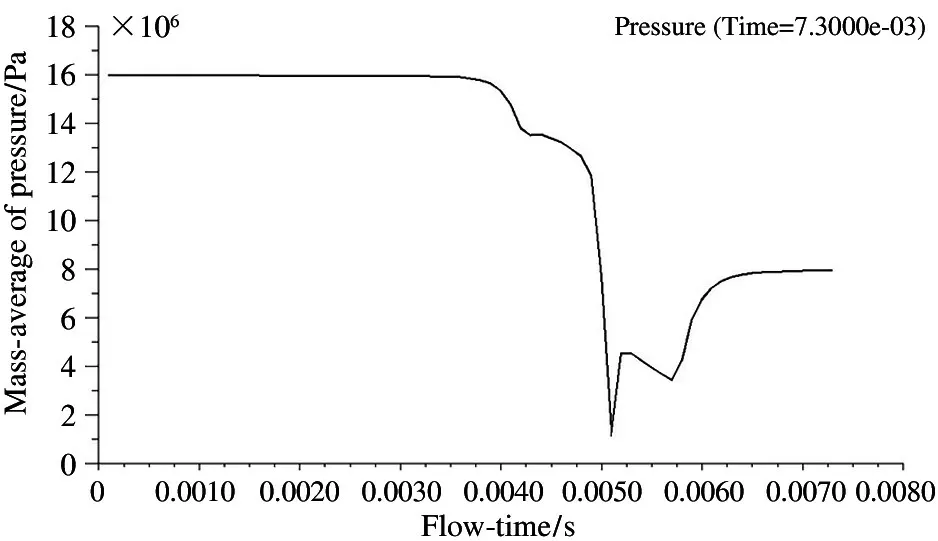
Fig.13 Mass-average pressure curve of oil in piston cavity whenδ=90 °
When the pressure change angle is 101 °,grooveB-Ais the pre-step-down interval,and the pressure change ratio is 1∶3,the input pressurepAis 8 MPa,and the output pressurepBis 24 MPa,and the pressure cloud diagram is shown in Fig.14.

Fig.14 Piston pressure cloud diagram whenδ=101 °
When the pressure variation angle is 101 °,the average mass pressure curve of oil in the plunger cavity in the pre-depressurizing interval of grooveB-Ais shown in Fig.15.
As can be seen from Fig.15,whent<0.0061 s,the oil pressure in the plunger cavity is already depressurizing when it leaves grooveB.Whent=0.0069 s,the plunger is about to break away from the buffer hole B2and contact the buffer holeA1,the oil pressure in the plunger cavity drops sharply,and then remains within a certain range under the action of the buffer holeA1.In this process,the movement of the plunger causes a great negative pressure area,which affects the value of the average force of the mass of the plunger,and the feedback becomes a fluctuation phenomenon of sudden pressure drop in the figure.Whent>0.0075 s,the plunger contacts grooveA,and the oil pressure in the plunger cavity quickly matches to the pressure value of grooveA.

Fig.15 Mass-average pressure curve of oil in piston cavity whenδ=90 °
4 Conclusions
A buffer hole structure of inclined plate plunger hydraulic transformer is proposed.It is calculated that the optimal envelope angle of the three buffer holes ofA-T-B-Ais 5°,and the optimal dimension is 1.8 mm,1.6 mm and 1.7 mm respectively.The transient process of the pressure change of the plunger during the transition between different grooves is simulated,and the cloud diagram of the flow field and pressure distribution in the high-speed operation of the hydraulic transformer is obtained.The simulation results show that the buffer structure can achieve better buffering effect in the range of variable pressure angle[0 °,101 °].At the same time,through the analysis of the simulation results,it is concluded that the amplitude of pressure change increases with the increasing of the transformer ratio of the hydraulic transformer.
杂志排行
High Technology Letters的其它文章
- Effect of integral squeeze film damper on vibration and noise of spur gear with center-distance error①
- Workspace optimization of parallel robot by using multi-objective genetic algorithm①
- Design and implementation of gasifier flame detection system based on SCNN①
- A simplified hardware-friendly contour prediction algorithm in 3D-HEVC and parallelization design①
- An efficient cross-layer buffer management optimization scheme for 5G protocol stack①
- Joint utility optimization algorithm for secure hybrid spectrum sharing①
